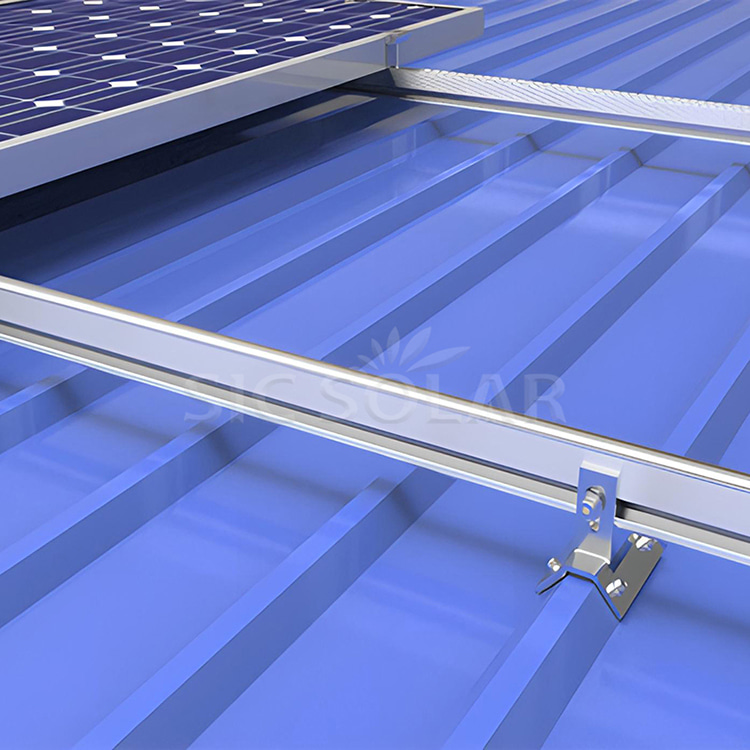Which Roof Mount Type Is Best for Your Solar Panel Installation?
2025-07-16
Installing solar panels is a smart investment, but one critical decision is often overlooked: choosing the right roof mount system. The mount is what holds your solar panels in place, and the type you select affects everything from panel efficiency to roof safety and long-term maintenance.
So, which roof mount type is best for your solar panel installation? Let's explore the most common types and how to determine the right fit for your home.
1. Rail-Based Mounting Systems
Best for: Most residential sloped roofs
Compatible roof types: Asphalt shingles, tile, metal
Rail-based systems are the most common type of solar mounts. They use horizontal rails that are attached to the roof, and the solar panels are then mounted onto these rails.
Pros:
Strong and secure
Easier to align and position panels
Compatible with a wide range of roof types
Cons:
More components and weight
Slightly longer installation time

2. Rail-Less Mounting Systems
Best for: Homeowners who prefer a low-profile look
Compatible roof types: Shingle and metal roofs
Rail-less systems attach the panels directly to mounting points on the roof without using rails. They are becoming popular due to their cleaner appearance.
Pros:
Lower profile and lighter weight
Fewer parts can reduce installation time
Cost-effective in some cases
Cons:
Less flexibility with panel layout
Requires more precision during installation
3. Shared-Rail Systems
Best for: Homes with limited roof space
Compatible roof types: Sloped roofs
Shared-rail systems reduce the number of rails by allowing two rows of panels to share a center rail. This improves space efficiency and lowers material usage.
Pros:
Fewer rails mean lower material cost
Clean and compact layout
Can reduce installation time
Cons:
Best suited for uniform panel layouts
Requires more careful planning
4. Ballasted Mounting Systems
Best for: Flat roofs on residential or commercial buildings
Compatible roof types: Concrete or membrane flat roofs
Ballasted systems do not penetrate the roof. Instead, they use heavy materials, like concrete blocks, to hold the system in place.
Pros:
No drilling or roof penetration
Quick and easy to install
Ideal for protecting roof warranty
Cons:
Heavy weight may require structural assessment
Not suitable in high-wind areas
Limited tilt angle options
5. Tilted Mounting Systems
Best for: Flat roofs that need optimal sun angle
Compatible roof types: Flat roofs
Tilted systems raise the panels at an angle to improve sun exposure and increase energy output, especially in areas with lower sun angles.
Pros:
Higher solar energy production
Better rain and snow runoff
Improved airflow around panels
Cons:
Higher wind load
More visible from the street
6. Roof-Integrated Mounts (BIPV)
Best for: New builds or full roof replacements
Compatible roof types: Custom roof installations
Building-integrated photovoltaics (BIPV) replace traditional roof materials with solar modules, making the panels a functional part of the roof.
Pros:
Seamless, modern appearance
Dual purpose: roof and solar generation
Can reduce roofing material costs
Cons:
Higher upfront cost
Lower efficiency than standard panels
Less flexible and harder to upgrade
How to Choose the Right Type
To find the best mount for your home, consider the following:
Roof type and slope: Choose a system that is compatible with your roofing material and structure
Local weather: In snowy or windy regions, you may need stronger mounts and steeper tilt angles
Budget: Some systems have lower upfront costs but may require more maintenance later
Aesthetics: If appearance matters, consider rail-less or integrated options
Roof penetration concerns: Ballasted systems are a great option if you want to avoid drilling into the roof
The best solar roof mount system depends on your unique situation. Each type offers advantages, and the right choice depends on your roof, your climate, your budget, and your energy goals. Partnering with a professional solar installer is the safest way to make sure your system is both efficient and long-lasting.